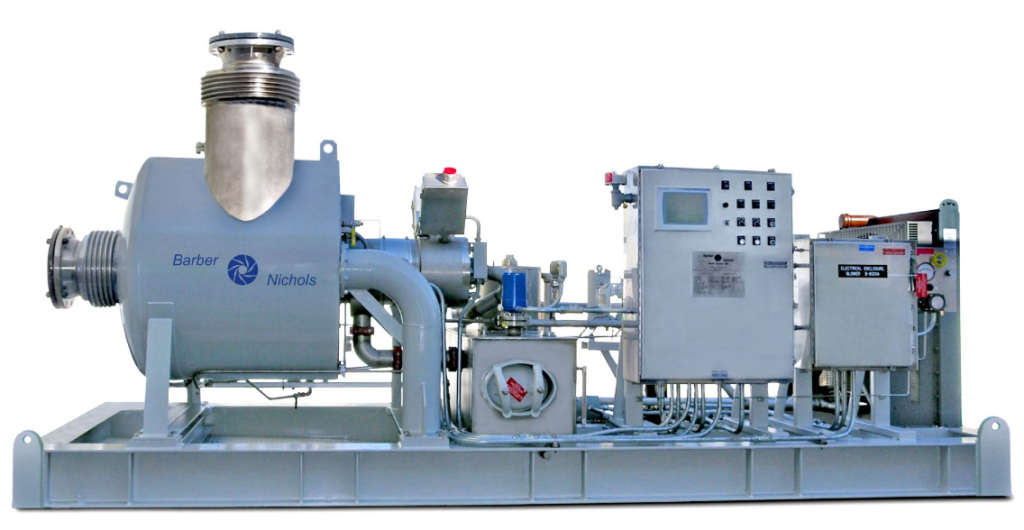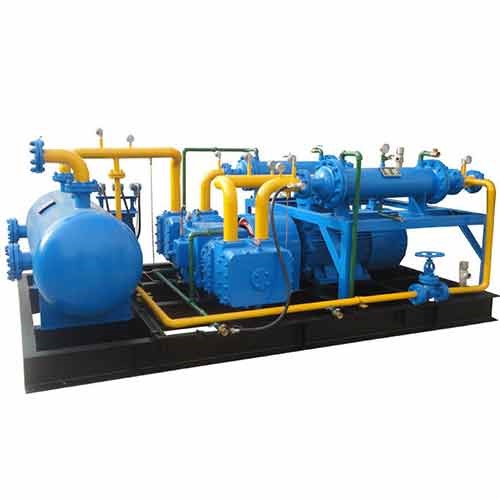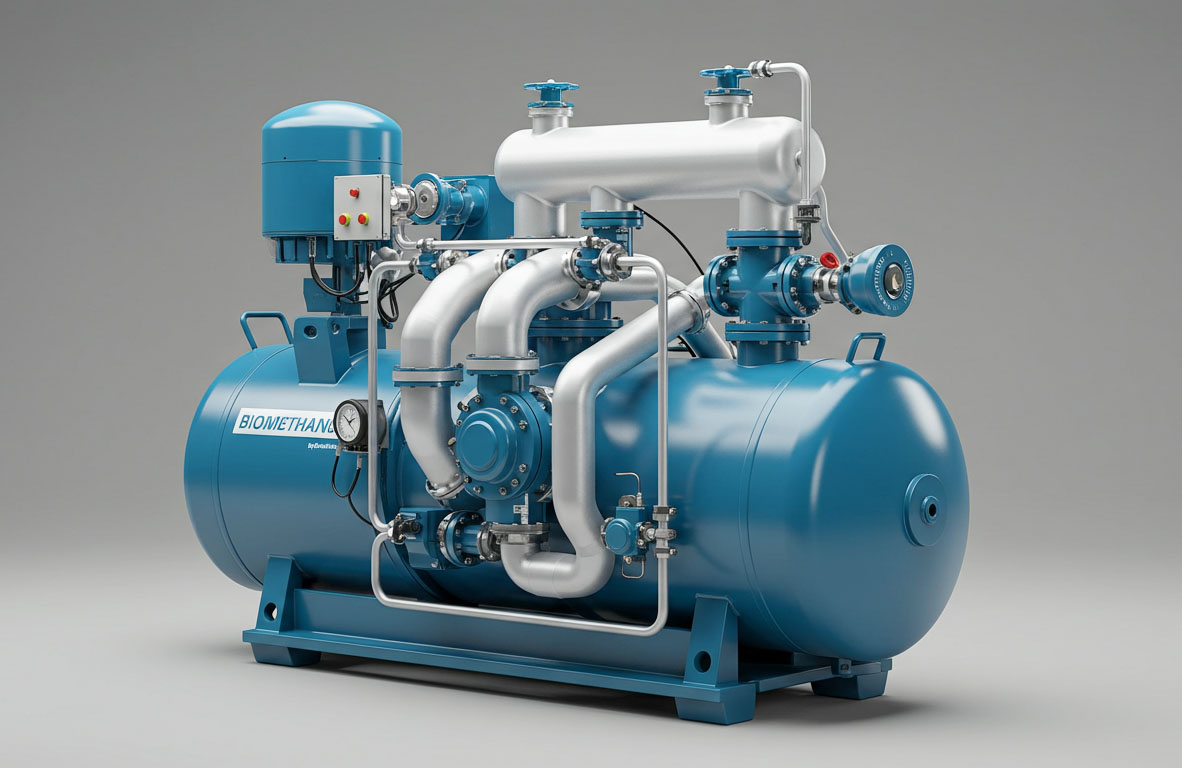LNG Compressor: Types, Applications, and Efficiency

Introduction
The liquefied natural gas LNG compressor industry has seen remarkable growth in recent years, driven by the increasing demand for cleaner and more efficient energy sources. LNG compression plays a pivotal role in this industry, ensuring the safe and efficient transportation of LNG from production facilities to end-users. In this comprehensive guide, we will delve into the world of LNG compressors, exploring their types, applications, and efficiency, and providing valuable insights for ranking these critical components.
LNG compressor refers to the process of pressurizing liquefied natural gas for various purposes, including storage, transportation, and distribution. This compression is indispensable because LNG needs to be maintained at low temperatures and high pressures to remain in its liquid state. By increasing the pressure, the volume of LNG is reduced, making it easier and more cost-effective to transport over long distances.
The significance of LNG compressor cannot be overstated, as it directly impacts the safety, efficiency, and economics of the LNG supply chain. Efficient compression ensures that LNG can be transported economically and reliably, making it a vital component of the global energy landscape.
Purpose of the Ranking Guide
This guide aims to provide valuable information for stakeholders in the LNG industry, including operators, engineers, and decision-makers. The primary purpose is to assist in the selection of LNG compressor by ranking them based on key criteria, such as efficiency, reliability, environmental impact, and capacity. By understanding the different types of compressors and their applications, readers can make informed decisions that optimize their LNG operations.
Scope of the Guide
Our guide will cover a wide range of topics related to LNG compression. We will explore the working principles, advantages, and applications of the three main types of LNG compressors: reciprocating, centrifugal, and screw compressors. Additionally, we will discuss the diverse applications of LNG compression, factors for ranking compressors, the methodology used for ranking, and provide case studies illustrating real-world applications. Finally, we will look into future trends in LNG compression technology.
II. Types of LNG Compressors
LNG compressors come in various types, each with its unique working principle, advantages, and applications.
A. Reciprocating LNG Compressors
1. Working Principle
Reciprocating compressors operate on the principle of positive displacement. They use pistons to compress LNG by moving back and forth within a cylinder. As the piston moves, it decreases the volume of gas, leading to an increase in pressure.
2. Advantages
Reciprocating compressors are known for their high efficiency and reliability, making them suitable for applications where consistent and precise compression is required. They are particularly well-suited for smaller LNG facilities.
3. Applications
Reciprocating compressors find applications in LNG production facilities, where they are used to pressurize gas for liquefaction. Their ability to handle varying loads and provide precise control makes them valuable in these operations.
B. Centrifugal LNG Compressors
1. Working Principle
Centrifugal compressors operate based on dynamic compression. They use a rotating impeller to accelerate LNG and convert kinetic energy into pressure energy. This compression method is highly efficient and suitable for high-capacity operations.
2. Advantages
Centrifugal compressors are known for their high capacity and low maintenance requirements. They excel in applications where a large volume of LNG needs to be compressed rapidly.
3. Applications
Centrifugal compressors are commonly used in LNG storage and transportation. They are preferred for large-scale facilities where high flow rates are essential.
C. Screw LNG Compressors
1. Working Principle
Screw compressors use intermeshing helical rotors to compress LNG. As the rotors rotate, gas is trapped and gradually compressed as it moves through the screw profile.
2. Advantages
Screw compressors offer a good balance between efficiency and capacity. They are known for their low noise levels and are suitable for medium to large-scale LNG applications.
3. Applications
Screw compressors are often employed in LNG distribution and regasification, where they play a crucial role in converting LNG back to its gaseous state for end-users.
III. Applications of LNG Compression
LNG compression is integral to various stages of the LNG supply chain. Understanding these applications is key to appreciating the importance of compression in the industry.
In LNG production facilities, natural gas is cooled to extremely low temperatures to liquefy it. This liquefaction process requires compression to increase the pressure of the gas before cooling. Reciprocating compressors are commonly used in this stage, ensuring that the gas is at the right pressure for liquefaction.
LNG is typically stored in cryogenic tanks to maintain its liquid state. When it needs to be transported, it is loaded onto LNG carriers, where compression ensures that it remains in its liquid form during transit. Centrifugal compressors are often used for this purpose due to their high capacity.
At the distribution end, LNG must be converted back to its gaseous state for use in various industries and households. Screw compressors are frequently employed in regasification facilities, where they play a critical role in the transformation process.
IV. Factors for Ranking LNG Compressors
When selecting LNG compressors, several key factors must be considered to ensure optimal performance and efficiency.
A. Efficiency and Energy Consumption
Efficiency is a crucial factor in LNG compression. The more efficient the compressor, the less energy it consumes, resulting in cost savings and reduced environmental impact.
B. Reliability and Maintenance
Reliability is paramount in LNG operations, where downtime can have significant financial implications. Compressors with low maintenance requirements and a history of reliability are highly desirable.
C. Environmental Considerations
With increasing focus on environmental sustainability, choosing compressors with low emissions and minimal environmental impact is essential for long-term viability.
D. Capacity and Flow Rate
Selecting compressors that match the required capacity and flow rate for specific applications is vital to ensuring smooth LNG operations.
V. Ranking Methodology
To rank LNG compressors effectively, a robust methodology is required.
A. Criteria and Weighting
We will establish clear criteria and assign weights to each criterion based on its importance in LNG compression. Criteria may include efficiency, reliability, environmental impact, and capacity.
B. Data Collection and Analysis
Accurate and up-to-date data on compressor performance will be collected and analyzed to assess their performance against the established criteria.
C. Ranking Process
Using the collected data and weighted criteria, compressors will be ranked to identify top performers in each category.
VI. Top-Ranked LNG Compressors
In this section, we will present the rankings for reciprocating, centrifugal, and screw compressors, highlighting the top performers in each category.
A. Reciprocating Compressor Rankings
We will showcase the leading reciprocating compressors based on their efficiency, reliability, and other criteria.
B. Centrifugal Compressor Rankings
Similarly, we will present the top centrifugal compressors, emphasizing their capacity and efficiency.
C. Screw Compressor Rankings
Screw compressors will also be ranked to help readers make informed decisions for their LNG distribution and regasification needs.
D. Overall Top Performers
Finally, we will identify the overall top-performing compressors that excel in multiple criteria, providing readers with a comprehensive view of the best options available.
VII. Case Studies
Real-world case studies will illustrate how top-ranked LNG compressors have been successfully implemented in various applications. These examples will showcase the tangible benefits of choosing the right compressor for specific operations.
A. Real-World Applications of Top-Ranked LNG Compressors
We will explore instances where the top-ranked compressors have made a significant impact on LNG production, storage, transportation, distribution, and regasification.
B. Performance Improvements Achieved Through Top Compressors
Case studies will highlight the performance improvements achieved by using top compressors, including energy savings, reduced maintenance costs, and enhanced reliability.
VIII. Future Trends in LNG Compression Technology
As technology continues to evolve, the LNG compression industry is no exception. In this section, we will discuss the emerging trends shaping the future of LNG compression.
A. Advancements in LNG Compressor Efficiency
We will explore the latest innovations and technologies aimed at improving the efficiency of LNG compressors, including advanced materials, design optimizations, and digital control systems.
B. Sustainability in LNG Compression
With sustainability becoming a top priority, we will delve into eco-friendly compressor technologies and their potential to reduce environmental impact.
C. Digitalization and Smart Monitoring
The future of LNG compression lies in digitalization and smart monitoring. We will discuss how these technologies can enhance compressor performance, reduce downtime, and enable predictive maintenance.
Conclusion
In conclusion, LNG compressor is a critical component of the LNG supply chain, impacting safety, efficiency, and economics. This guide has provided valuable insights into the types of LNG compressors, their applications, ranking methodologies, and future trends. As the LNG industry continues to evolve, choosing the right compressor is essential for success. We encourage stakeholders to use the information provided to make informed decisions and embrace the advancements in LNG compression technology to meet the ever-growing demand for clean and efficient energy sources. The future of LNG compression is bright, and it promises to play a pivotal role in shaping the energy landscape of tomorrow.


